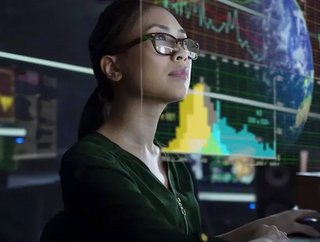Tableau and the USAF: data as a strategic asset

Data analysis and visualisation company Tableau offers its customers the capacity to make better use of the data they have. Michael Parker is VP, Business Development at the company. “ Tableau's mission is simple,” he says. “We help people see and understand their data. We provide that through a single pane of glass view of their data in a secure environment, ensuring the right people have the right access to the right data at the right time.” The security of that data is another key concern, with the company striving to fulfill that aspect while ensuring it remains accessible. “The ability to use your data in this secure environment is critical. That’s accomplished by building a data trust initiative with customers, building accuracy, timeliness, quality measures into their data and ultimately creating a culture of literacy and knowledge around data. We don't expect everyone to be a data scientist, but we do see data literacy grow across organisations.”
Parker has 34 years of experience as a public servant, having recently transitioned from the DOD, and has accordingly seen a sea change in how data is used. “Data analytics and visualisation was classically used by data analysts for descriptive analytics, predictive analytics, but mostly for measurement tools and the creation of reports. That's changed significantly now with new, powerful weapons within analytic platforms like Tableau that allow real-time decision-making for both subject matter experts and senior leaders alike to draw insights from data.”
It’s that capability that is behind Tableau’s partnership with the United States Air Force, as Parker explains. “They’re looking at data as a strategic asset and as a common service component of digital transformation. We use the tools specifically around a couple of use cases that draw a great return on investment. One was civilian hiring. We needed to understand where the choke points are, where's the lag and the slack in the process. By pulling the data in from end-to-end in that whole civilian hiring process, we could look at it through an operational lens to really understand where we were experiencing challenges. Strategic decisions made along the way ultimately compressed the timeline by two thirds.”
With chief data offices now established in each of the services, Parker believes the full value of data is now being appreciated. In standing that up, it's been recognised that data is a strategic asset and a powerful tool for both the business and warfighting domains.” The partnership has also proved its worth in the response to the COVID-19 pandemic. “Having tools for personnel use, personnel accountability, tracking of individuals and even return to work processes was really important, and so the partnership was critical at that point.”
Parker emphasises that the partnership is built to last. “At Tableau, we plan to continue to build our partnership and understand the strategic and operational needs of the Defense Department and how the platform can help solve issues and provide capabilities in strengthening our partnership over time.”






